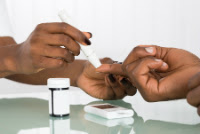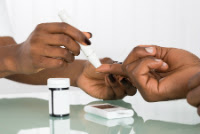I Love Those Lentils!

Coming from an Indian heritage, lentils have been an important part of my daily meals all my life. I absolutely love them and really wanted to share their beneficial properties with all of you readers and foodies!
Around the world, people enjoy the health benefits of lentils, part of a group of proteins known as pulses, which also includes beans, peas, chickpeas. Naturally gluten-free, lentils are rich in dietary fiber, protein, calcium, potassium, zinc, and iron. They help support lower cholesterol levels and are a great addition to the diet especially for people diagnosed with blood glucose/ blood sugar disorders.
Prior to the use of pharmaceutical medicines, lentils were used to deal with diabetic conditions. When included with a meal, the high fiber content helps prevent blood glucose from rising rapidly after eating. Although calorie dense (230 cal/ one cup serving), lentils are low in fat and very filling – you won’t be hungry after a lentil meal! I can vouch for that one from extended personal experience!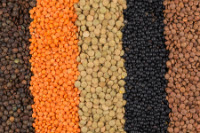
You can find lentils in the bulk bin aisle or in prepackaged containers.
A few tips on purchasing and cooking:
When purchasing in bulk, try to buy organic and make sure there is no moisture in the bin or in the packaging. Look for whole, not cracked lentils. Store them in an airtight container in a cool, dark and dry place. They will keep up to a year. When buying canned lentils, watch for added salt or other preservatives. though I don’t recommend canned food AT ALL, just for your information, unlike other canned veggies, lentils do not lose much of their nutritional potency.
Lentils are easy to prepare (I do like to pre-soak them but if in a hurry, can cook without presoaking unlike other dry beans). Wash and strain lentils under cool water before cooking. You can boil lentils (I like to use my pressure cooker as a matter of habit, but you can use an Instant Pot as well if you have one) and store in the fridge for later use in casseroles, soups, rice or pasta dishes, salads, spreads/hummus, or soups. Cooked lentils stay fresh in the fridge in a covered container for about three days.
Write in the comments if you liked these tips and how you use lentils and share some of your favorite recipes if you can so all of us can benefit.
I look forward to hearing from you!
References:
-
Future of Food: Pulses & Nutrition. Accessed on 6 Sep 2016: http://pulses.org/future-of-food/pulses-nutrition
-
Video: NutritionFact.org. “Diabetics Should Take Their Pulses” http://nutritionfacts.org/video/diabetics-should-take-their-pulses/
-
Helmstadter, A. “Antidiabetic drugs used in Europe prior to the discovery of insulin.” Pharmazie (2007) 62(9):717 – 720. http://www.ncbi.nlm.nih.gov/pubmed/17944329
-
MedicalNewsToday.com. Accessed 6 Sep 2016: http://www.medicalnewstoday.com/articles/297638.php
-
World’s Healthiest Foods: Lentils. Accessed 6 Sep 2016: http://www.whfoods.com/genpage.php?tname=foodspice&dbid=52
-
Singhal, P., Kaushik, G., Mathur,P. “Antidiabetic potential of commonly consumed legumes: A review.” Crit Rev Food Sci Nutr (2014) 54(5):655 – 672. Accessed 6 Sep 2016: http://www.ncbi.nlm.nih.gov/pubmed/24261538
-
Thompson, S.V., Winham, D.M., Hutchins, A.M. “Bean and rice meals reduce postprandial glycemic response in adults with type 2 diabetes: A cross-over study.” Nutr J (2012) 11:23. Accessed 6 Sep 2016: http://www.ncbi.nlm.nih.gov/pubmed/22494488
-
MindBodyGreen.com. “7 Health Benefits of Lentils” Accessed 6 Sep 2016: http://www.mindbodygreen.com/0-5488/7-Health-Benefits-of-Lentils.html
Image attribution: rtsubin/bigstockphoto.com
The information offered by this blog is presented for educational purposes. Nothing contained within should be construed as nor is intended to be used for medical diagnosis or treatment. This information should not be used in place of the advice of your physician or other qualified health care provider. Always consult with your physician or other qualified health care provider before embarking on a new treatment, diet or fitness program. You should never disregard medical advice or delay in seeking it because of any information contained within this blog. © Praana Integrative Medicine & Holistic Health Center, LLC. All rights reserved
Dr. Manisha Ghei February 19th, 2017
Posted In: Blog Post, Food, Integrative Medicine, Recipes
Tags: blood sugar, cholesterol, Diabetes Mellitus, Fiber, functional medicine, healthy heart, heart health, heart health month, heart healthy foods, heart healthy recipe, lentils, mindful eating, nutrition, recipe
Hawthorn: The Heart Healthy Herb
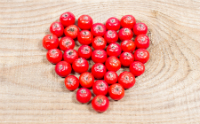
Hawthorn (Crataegus oxyacantha)
Hawthorn, also known as Maybush, is a thorny shrub found on hillsides and in sunlit woodsey areas throughout the world. Over centuries, all parts of the plant have been used to prepare foods, beverages, and medicines. In folk medicine, Hawthorn was used for the treatment of diarrhea, insomnia, and asthma. In China, it has been used to treat digestive problems, high cholesterol, poor circulation, and shortness of breath. During the early 1800s, doctors in North America used Hawthorn for heart conditions, circulatory, and respiratory disorders.
Hawthorn has a rich supply of flavonoids (antioxidants that protect cells from damage) and anti-inflammatory properties, which are important to heart health. It plays a role in helping dilate blood vessels, improves blood flow to the heart, and can lower blood pressure. In Europe, Hawthorn is regarded as a safe and effective treatment for early-stage heart disease. It is used to promote the health of the circulatory system and in patients with angina, high blood pressure, and congestive heart failure. In studies, patients with heart failure who took Hawthorn showed improvement in clinical symptoms and sense of wellbeing.

Hawthorn is available as tea, capsule, tincture, and standardized extract found in prescription drugs, over-the-counter medication, standardized herbal medicine, or dietary supplements. Before taking Hawthorn, especially if you suspect or have a heart or lung condition, consult with a FUnctional medicine / Integrative holistic medical professional.
Resources
Hawthorn. Complementary and Alternative Medicine Guide. University of Maryland Medical Center Online. https://umm.edu/health/medical/altmed/herb/hawthorn
Johnson, Rebecca L. & Foster, Steven et al., National Geographic Guide to Medicinal Herbs: The World’s Most Effective Healing Plants. (National Geographic Society. (2010, 2014), 123-125.
Hawthorn Berry (Crateagus Oxycanthus): Health Benefits. http://www.herbwisdom.com/herb-hawthorn-berry.html
Mars, Bridgitte & Fiedler, Chrystle. Home Reference Guide to Holistic Health & Healing. (Beverly, MA: Fair Winds Press. 2015.), 189.
Dahmer, S., Scott, E. “Health Effects of Hawthorne,” Amer Family Phys. (Feb 15, 2010) 81:4, 465-468. Accessed: Dec. 09, 2015: http://www.aafp.org/afp/2010/0215/p465.html
Chang, W., Dao, J., and Shao, Z. “Hawthorn: Potential Roles in Cardiovascular Disease.” American Jnl. Chinese Medicine (January 2005) 33:01, pp. 1-10. DOI: 10.1142/S0192415X05002606. http://www.worldscientific.com/doi/abs/10.1142/S0192415X05002606?url_ver=Z39.88-2003&rfr_id=ori%3Arid%3Acrossref.org&rfr_dat=cr_pub%3Dpubmed&
ie Wang, Xingjiang Xiong, and Bo Feng, “Effect of Crataegus Usage in Cardiovascular Disease Prevention: An Evidence-Based Approach,” Evidence-Based Complementary and Alternative Medicine, vol. 2013, Article ID 149363, 16 pages, 2013. doi:10.1155/2013/149363.
http://www.hindawi.com/journals/ecam/2013/149363/
Image attribution: morisfoto/bigstockphoto.com
The information offered by this blog is presented for educational purposes. Nothing contained within should be construed as nor is intended to be used for medical diagnosis or treatment. This information should not be used in place of the advice of your physician or other qualified health care provider. Always consult with your physician or other qualified health care provider before embarking on a new treatment, diet or fitness program. You should never disregard medical advice or delay in seeking it because of any information contained within this blog.
Dr. Manisha Ghei February 7th, 2016
Posted In: Blog Post, Uncategorized
Tags: angina, blood pressure, congestive, February, functional medicine, hawthorn, healthy heart, heart disease. heart health, heart health, heart health month, heart healthy foods, vascular health
Secrets to a Healthy Heart
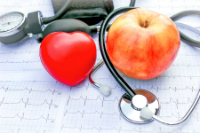
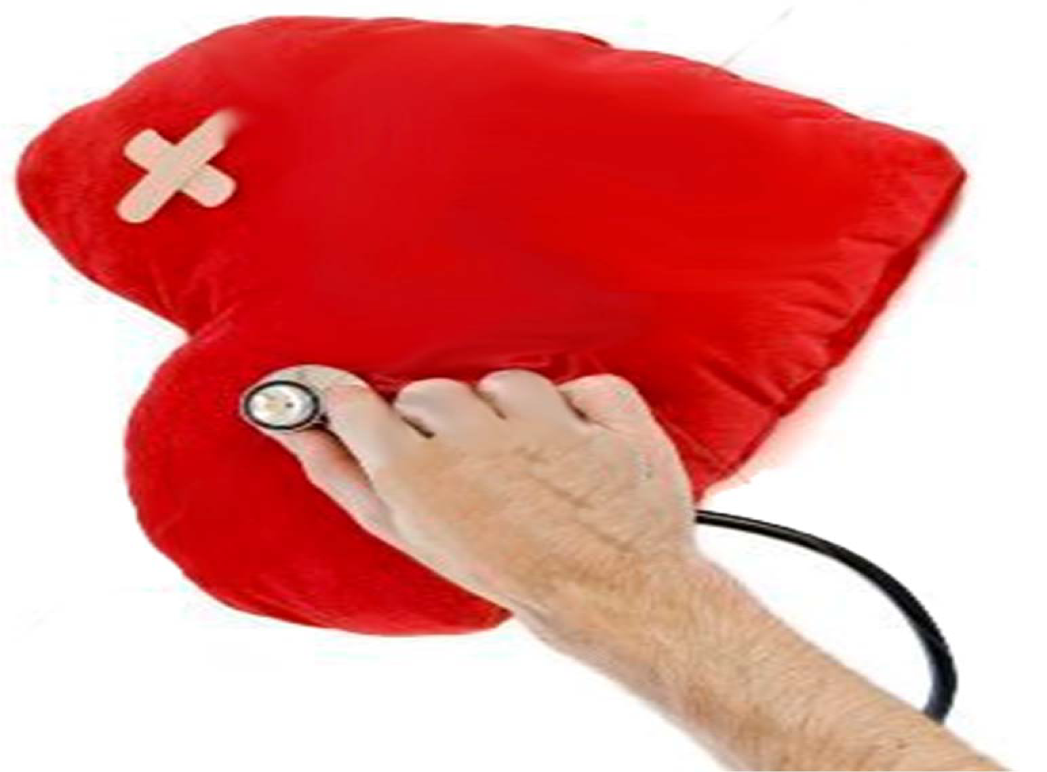 Long before the ancient Greek surgeon Galen carried out meticulous dissections of the heart, the Egyptians wrote about health and disease in relation to how the heart “speaks in vessels” with the rest of the body. Today, physicians may not associate the heart with the soul (or soul mates), but many credit early Egyptian medical knowledge of the heart as a precursor to modern cardiology.
Long before the ancient Greek surgeon Galen carried out meticulous dissections of the heart, the Egyptians wrote about health and disease in relation to how the heart “speaks in vessels” with the rest of the body. Today, physicians may not associate the heart with the soul (or soul mates), but many credit early Egyptian medical knowledge of the heart as a precursor to modern cardiology.
The Heart: Powerful, but Vulnerable
A key element of a healthy body is a healthy heart. The heart is the center of our cardiovascular system and beats an average of 100,000 times per day supplying oxygen rich blood to the whole body. Every day we make choices that have a profound affect on the health of this vital organ. Most heart disease (HD) is linked to inflammatory risk factors such as lack of exercise, obesity, smoking, stress, and poor eating habits.
One major condition that can develop with these risk factors is Hypertension, also known as high blood pressure. Often called the ‘silent killer’, Hypertension can cause significant damage throughout the cardiovascular and other body systems and ultimately results in over 80 million deaths each year.
The Silent Killer
Blood pressure is the amount of pressure exerted on the inside of blood vessels as the heart pumps the blood through the body. When there is resistance in the vessels, the pressure rises and hypertension results. The longer hypertension goes undetected and/or uncontrolled, the greater the damage to blood vessels and other organs. Hypertension can lead to heart attack, stroke, ruptured blood vessels, kidney disease or failure, and heart failure.
Warning signs for high blood pressure are rare but can include headaches, blurred vision, light-headedness, shortness of breath and nosebleeds. However, there are typically no warning signs or symptoms for hypertension, which is why it is called the silent killer.
Hypertension is diagnosed by looking at 2 numbers in your BP reading: Systolic pressure (the top number) is the pressure in your arteries when the heart beats (contracts). Diastolic pressure (bottom number) represents the pressure in your arteries between beats.
• Normal blood pressure is below 120/80
• Prehypertension is 120 – 139 systolic or 80 – 89 diastolic.
• Hypertension is 140/90 or higher
The Potassium Secret for a Healthy Heart
You’ve no doubt heard the best thing to do when you have hypertension is to reduce the amount of salt/sodium in your diet. Did you know the average adult needs 4,700 mg of potassium daily compared to only 200 mg of sodium. Unfortunately for most of us, our eating habits give us way too much sodium – 3,300 mg a day – and not nearly enough potassium. This imbalance can increase your risk of developing hypertension.
What’s truly important for your heart, and a more accurate strategy to prevent high blood pressure, is to balance the relationship between potassium and sodium (salt) in your daily diet. Proper sodium-potassium balance is necessary for nerve transmission, muscle contraction, fluid balance, and the optimal health of all the cells in your body. In regard to the heart, potassium is particularly important for regulating heart rhythm and maintaining blood pressure.
By reducing your sodium intake, you are often correcting the sodium-potassium imbalance without realizing it. To further support your heart health, eat more potassium-rich foods such as sweet potato, spinach, banana, peas, legumes, apricots, avocados, halibut and molasses.
More Healthy Heart Tips & Heart-Healthy Diet Do’s:
- Eat a variety of fresh fruits and dark green veggies daily.
- Use plant-based oils for cooking.
- Eat mindfully, not on-the-run.
- Reduce or eliminate packaged foods, sugar, and red meat.
- Walk, No Need to Run: 30 minutes of daily, brisk walking lowers your risk for hypertension.
- Be Calm: Learn to manage stress with healthy coping techniques, such as, deep breathing, yoga, meditation, gratitude journaling, and getting quality sleep.
- Supplemental Support: Nutritional supplements shown to support heart health include Hawthorn, CoQ10, Essential Fatty Acids (Omega 3), Magnesium, Garlic and B-vitamins. Always speak with your Integrative/ Functional Medicine physician as to which forms of these supplements and what doses are optimal for you as all forms are not equal in efficacy or quality. Supplements you might have heard about—Natto-K (nattokinase), Guggul, or Niacin—should not be taken without the supervision of your health practitioner.
Because some blood pressure medications affect the potassium level in the body, be sure and discuss the best strategy for making this adjustment with your Functional Medicine Physician /Integrative Holistic Doctor.
Resources:
Murray, M. “Hypertension” as cited in Pizzorno, Joseph E. (2013). Textbook of Natural Medicine. St. Louis, MO Elsevier. (chapter 174), 1475-1485.
Johnson, R.L., S. Foster, Low Dog, T. and Kiefer, D. “Plants and the Heart” in National Geographic Guide to Medicinal Herbs: The World’s Most Effective Healing Plants. Washington, D.C.: National Geographic, 2012. 100-101.
Centers for Disease Control and Prevention, National Center for Health Statistics. Underlying Cause of Death 1999-2013 on CDC WONDER Online Database, released 2015. Data are from the Multiple Cause of Death Files, 1999-2013, through the Vital Statistics Cooperative Program. Accessed on December 11, 2015.: http://wonder.cdc.gov/ucd-icd10.html
Mayo Clinic. “High Blood Pressure- Hypertension.” Updated November 10, 2015. http://www.mayoclinic.org/diseases-conditions/high-blood-pressure/basics/definition/con-20019580
National Heart, Lung & Blood Institute. “Risk Factors for High Blood Pressure.” Updated September 2015. http://www.nhlbi.nih.gov/health/health-topics/topics/hbp/atrisk
Lelong, H., Galan, P. et al., “Relationship Between Nutrition and Blood Pressure: A Cross-Sectional Analysis from the NutriNet-Santé Study, a French Web-based Cohort Study” Am J Hypertens first published online September 3, 2014 doi:10.1093/ajh/hpu164. Accessed on Dec 21, 2015: http://ajh.oxfordjournals.org/content/early/2014/09/03/ajh.hpu164
Study above cited in Time magazine article, accessed on Dec 21, 2015: http://time.com/3313332/salt-and-blood-pressure/
Appel, L.J., Brands, M.W., et al., American Heart Association. “Scientific Statement: Dietary Approaches to Prevent and Treat Hypertension.” Updated January 2014. http://dx.doi.org/10.1161/01.HYP.0000202568.01167.B6
American Heart Association. “Learn more about heart disease and high blood pressure.” Accessed on December 11, 2015. http://www.heart.org/HEARTORG/Conditions/HighBloodPressure/High-Blood-Pressure-or-Hypertension_UCM_002020_SubHomePage.jsp
American Heart Association. “Walk, Don’t Run Your Way to a Healthy Heart.” Accessed on December 11, 2015.
http://www.heart.org/HEARTORG/GettingHealthy/PhysicalActivity/Walking/Walk-Dont-Run-Your-Way-to-a-Healthy-Heart_UCM_452926_Article.jsp#.Vop0pDYwcrg
Also see:
http://www.heart.org/HEARTORG/Conditions/Conditions_UCM_001087_SubHomePage.jsp
American Heart Association. “Walking Can Lower Risk of Heart Related Conditions” Accessed on December 11, 2015.
http://newsroom.heart.org/news/walking-can-lower-risk-of-heart-related-conditions-as-much-as-running
American Heart Association. “Potassium and high blood pressure.” Last Updated August 04, 2014. Accessed on December 11, 2015.
http://www.heart.org/HEARTORG/Conditions/HighBloodPressure/PreventionTreatmentofHighBloodPressure/Potassium-and-High-Blood-Pressure_UCM_303243_Article.jsp#.Vopz2DYwcrg
Harvard School of Public Health. “Shifting the Balance of Sodium and Potassium in Your Diet.” Accessed on December 11, 2015. http://www.hsph.harvard.edu/nutritionsource/sodium-potassium-balance/
Linus Pauling Institute: Micronutrient Information Center. “Sodium (Chloride).” Last Reviewed 2008. Accessed on December 11, 2015. http://lpi.oregonstate.edu/mic/minerals/sodium
Linus Pauling Institute: Micronutrient Information Center. “Potassium.” Last Reviewed 2010. Accessed on December 11, 2015. http://lpi.oregonstate.edu/mic/minerals/potassium
Image attribution:
lola1960/bigstockphoto.com |
The information offered by this blog is presented for educational purposes. Nothing contained within should be construed as nor is intended to be used for medical diagnosis or treatment. This information should not be used in place of the advice of your physician or other qualified health care provider. Always consult with your physician or other qualified health care provider before embarking on a new treatment, diet or fitness program. You should never disregard medical advice or delay in seeking it because of any information contained within this blog.
Dr. Manisha Ghei February 7th, 2016
Posted In: Blog Post
Tags: blood pressure, February, healthy heart, heart health, heart health month, heart healthy foods, hypertension, mindful eating, nutrition, potassium

